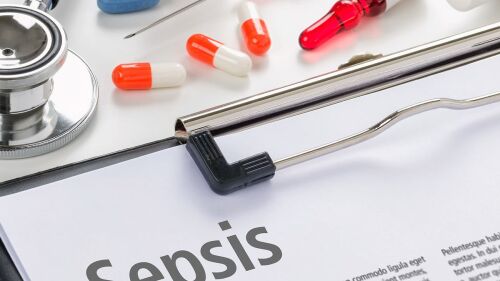By Alena Maschke
The lawyer
LAFAYETTE, Louisiana – She didn’t know it yet, but when Kathryn Duncan’s husband was admitted to Our Lady of Lourdes Regional Medical Center on March 26, 1998, her family’s life was about to change forever.
Shea Duncan, then 38, was in perfect health when he suddenly started feeling unwell. His family doctor thought he had the flu and sent him home with antibiotics. Two weeks later, Duncan’s condition worsened. At one point, every inch of his body was so painful to the touch that he could no longer even bear the feeling of the bedsheets on him.
Duncan, who worked in construction and owned his own trucking company, had contracted a staph infection – probably while working on construction sites – that developed into sepsis, an overreaction of the immune system to an infection or injury that damages the body’s tissues and organs. This incident triggered a series of surgeries from which he would never fully recover.
Sepsis is notoriously difficult to diagnose, especially in an emergency situation. But with the help of a new diagnostic tool, doctors in Lourdes can now detect the disease within about ten minutes – and thus save lives.

Update your understanding of the role of antibiotics, fluid administration and clinical care coordination
“The problem with sepsis is that it often presents itself in many different forms,” says Dr. Chad Vincent, a hospital internist in Lourdes. “Often the symptoms change within a short period of time, and in overburdened emergency rooms, time is always of the essence.”
The new diagnostic tool, IntelliSepenables rapid testing of a standard blood sample and analyses the response of the white blood cells, which in turn enables doctors to make a diagnosis faster than with conventional methods.
In Duncan’s case, hospital staff performed a spinal tap, which his wife said would take five days to evaluate. When Kathryn Duncan noticed unusual spots on his hands and feet, she asked an infectious disease doctor to look into it. The doctor diagnosed a staph infection and sepsis. If they had waited for the spinal tap results, her husband would not have survived, the doctor told her.
Shea Duncan survived that terrible day, but struggled with the long-term effects of subsequent surgeries for nearly two decades and eventually died at the age of 58.
“That was the downfall because we couldn’t see it early enough,” said Kathryn Duncan. “If they had had that technology then, we would probably still have Shae today.”
While other potentially fatal health problems can be more easily identified – heart problems can be detected using an ECG, stroke symptoms using a CT scan or magnetic resonance imaging (MRI) – there is no comparable technology for sepsis, Vincent stresses.

Design your training scenario to include increasingly complex sepsis symptoms to test rescuers’ differential diagnosis skills.
“There was a certain gap in terms of instruments and diagnosis of sepsis,” he said.
Of the 1.7 million patients diagnosed with sepsis each year, 270,000 die from it. This does not include cases like Duncan’s, where the patient suffers long-term health problems that lead to premature death.
“It’s the leading cause of death in the hospital,” Vincent said.
For many vulnerable patients, this can be the reason they no longer have a chance of recovery. Samantha Singletary, a hospice nurse, said many of her patients come from long-term care facilities or hospitals and end up in her care because they are on the brink of death due to sepsis.
The actual cause is often urinary tract infections or pneumonia. If they are detected too late, this can lead to sepsis, which overwhelms the already elderly or sick patient.
“It takes a while to figure out why Grandma is confused,” Singletary said. “So they usually leave when they’re in a crisis and they needed help yesterday, so it’s hard to get them out of that situation.”
Louisiana State University and the Franciscan Missionaries of Our Lady Health System were among the few universities and hospital systems in the country to test the new technology. After a successful year at Our Lady of the Lake in Baton Rouge, it is now being used in Lafayette.

Reducing mortality by identifying, reporting and treating sepsis locally
Vincent estimates that hundreds of patient samples have been tested in the three weeks since the rollout. Based on data collected in the pilot program in Baton Rouge, Lourdes expects the new technology will save one life in every 500 high-risk patients. Based on emergency room throughput rates, that could mean saving a life about every two weeks.
Although the technology is still very new in Lafayette, Vincent said he has already seen its impact. “We’re already seeing treatment patterns changing. We’re finding that IntelliSeps allows us to initiate that early, aggressive treatment that is so important to make sure people are protected from the complications of sepsis,” Vincent said.
(c)2024 The Advocate, Baton Rouge, Louisiana.
Visit The Advocate, Baton Rouge, Louisiana, at www.theadvocate.com
Distributed by Tribune Content Agency, LLC.

CalOptima Health will provide medical care to the homeless population in Costa Mesa

The Tunnel to Towers Foundation’s mobile exhibition honors the fallen at the Allen County Fair

Davenport store employees began CPR and administered two shocks with an AED before emergency medical personnel arrived

If you had the opportunity to interview former President Trump or Vice President Harris, what questions would you ask?

